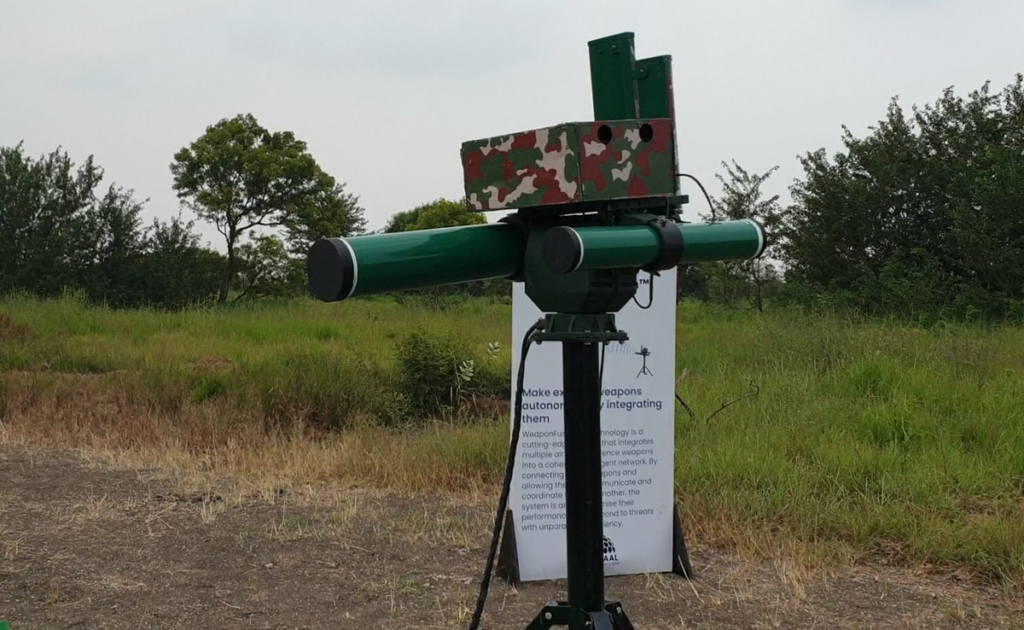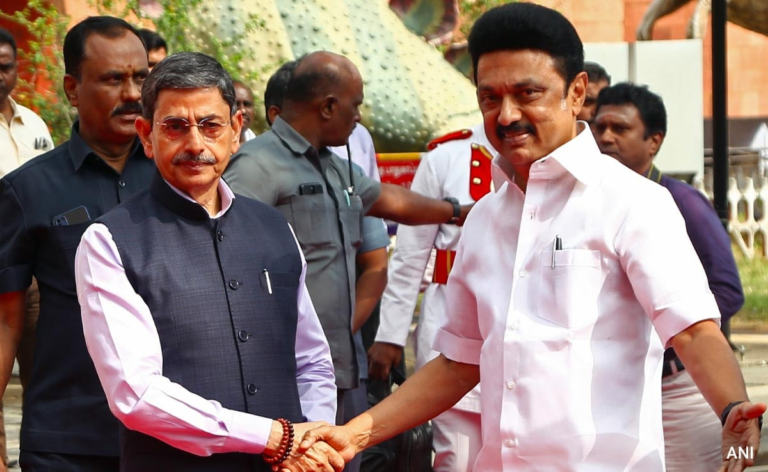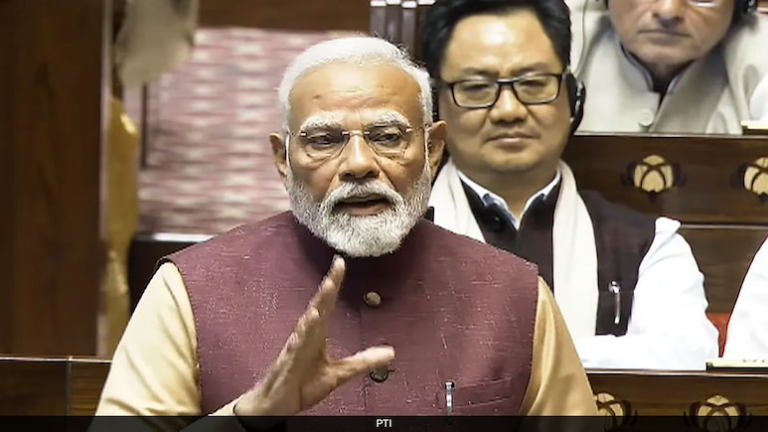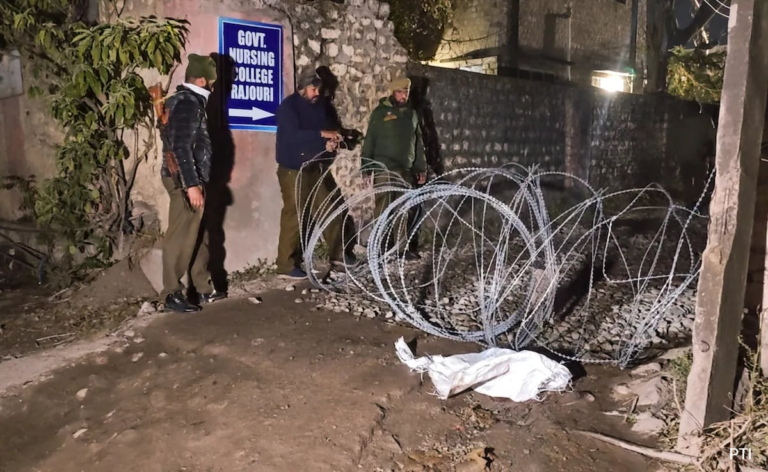
This is the first time such a system has been developed in India.
Hyderabad:
A Hyderabad-based robotics firm has unveiled a state-of-the-art autonomous anti-drone system, powered by artificial intelligence. The system can protect not just vital installations like nuclear installations and oil rigs, but also a wide area encompassing even an entire city, from multiple drones of any kind. This is the first time such a system has been developed in India.
This advanced full-spectrum drone security system capability was demonstrated live on the outskirts of Hyderabad by Grene Robotics, a deep-tech company that specialises in providing AI-powered security solutions for defence, enterprise, and government sectors.
Named Indrajaal, it is said to be the world’s only wide-area Counter-Unmanned Aircraft System (C-UAS). It can provide a comprehensive and integrated security mechanism against moving threats that cannot be tackled with static defence systems.
Uttarakhand Governor Lieutenant General Gurmit Singh, who served as the Deputy Chief of Army Staff from 2014 to 2016, sees Indrajaal as a futuristic solution to India’s security challenges in the defence, public infrastructure, and private sectors.
“We will never forget the June 27, 2021 drone attack on the Jammu airport and the June 15 Galwan attack. At that time, we wondered what solution we had against drones and swarms. Today, Indrajaal has given us the answer and shown that it is possible.”
Kiran Raju, the founder of Grene Robotics, which was established 12 years ago, says that Indrajaal’s design uses a LEGO-like combination mechanism that offers 12 unique layers of technology powered by artificial intelligence.
“The system provides 360-degree protection, with the ability to detect, identify, classify, track, and neutralise threats in real time. The threat lifetime can be as short as 30 seconds to a few minutes,” Mr Raju said.
Indrajaal is designed to defend against all classes and levels of autonomous drones over an area of 4,000 square kilometres.
“From low radar cross section (RCS) threats to medium and high-altitude long endurance (MALE and HALE) UAVs, loitering munitions, smart bombs, rocket showers, nano and micro drones, swarm drones, and more, we have it all covered,” said Wing Commander Sai Mallela, co-founder of Grene Robotics. He had earlier helped develop the Integrated Air Command and Control System for the Indian Air Force, to adopt network-based operations, and also helped orchestrate a multi-million dollar import substitution for the forces.
Lt Col Gurmit Singh, who has headed units that overlooked the Line of Control in Kashmir and has also worked in border issues and counter-terrorism, points out that India has seen a significant increase in hostile UAV activity in the past couple of years. This includes attempts to drop weapons, money, and narcotics across the border into Jammu and Punjab regions, as well as missions to surveil Indian security forces.
In 2020, there were 76 reported cases of hostile UAV activity in India. This number increased to 109 in 2021 and 266 in 2022. In the first 8 months of 2023, there have already been 200 reported cases, drawing attention to the need for heightened vigilance and counter-measures to safeguard national security.
Mr Raju says that in the near future, we will see a lot of drone activity, and 95% of them will be friendly drones rather than threats. “Indrajaal can identify friendly drones from foes.”
On the cost, Mr Raju says, “If I am building the Telangana secretariat for Rs 200-300 crore, this system would cost about Rs 5 crore. This is a typical capital infrastructure cost to protect what you are building. For example, level 4 data centres have fire protection, and they also need drone protection as part of their capital infrastructure.”
Wing Commander Sai Mallela explains that current deployments have limitations, as stand-alone systems are not scalable or practical. “Only radar-based detections are inaccurate at low radar cross section (RCS) and close to the ground. They are even incapable of identifying the operating radio frequency.”
Besides, jamming can only delay an attack, not stop it. Laser weapons require a large, non-moving target, and there is no countermeasure to mitigate a swarm attack. Existing point defence-based anti-UAV systems rely on physical sighting, but drones are a moving target.
The makers of Indrajaal are confident that their system can protect large defence bases, areas like the National Capital Region (NCR) that has several critical buildings, international borders, and prevent attacks during VIP movement or huge crowds, against UAVs, low radar cross-section (RCS) missiles, smart munitions, and even swarm drones.
“A simple refinery oil field could be spread over 300-400 square kilometres. The uniqueness of this system is that it can be deployed as a single system over that entire area, ensuring no conflict of command and control, because there is a single decision center. This is a huge benefit in terms of operation, command and control, and costs. We are heavily indigenous, which is a significant step in itself,” says Wing Commander Sai Mallela.
(This news is published through a syndicated feed courtesy NDTV)



